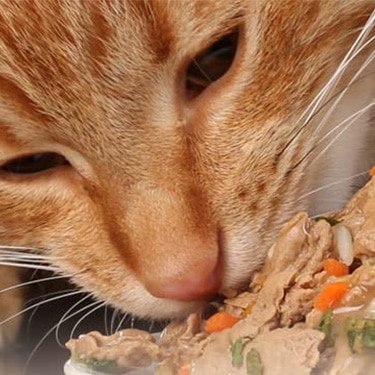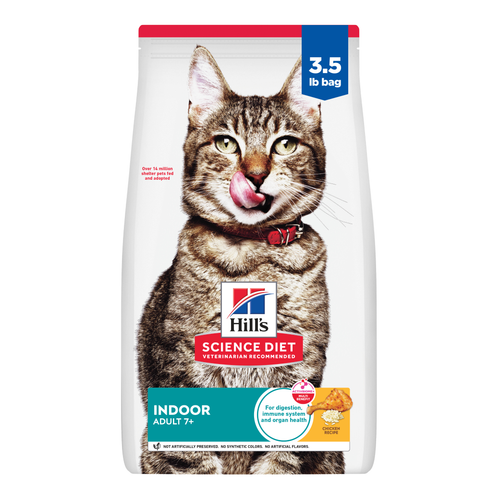
-
Find the right food for your petTake this quiz to see which food may be the best for your furry friend.Find the right food for your petTake this quiz to see which food may be the best for your furry friend.Featured products
 Adult Large Breed Chicken & Barley Recipe Dog Food
Adult Large Breed Chicken & Barley Recipe Dog FoodSupports healthy joints, lean muscle, and beautiful coat for large breed dogs
Shop Now Hill's Science Diet Adult Chicken & Beef Entrée Dog Food
Hill's Science Diet Adult Chicken & Beef Entrée Dog FoodChicken & Beef Entrée in a delicious loaf with complete & balanced nutrition to help keep adult dogs active and healthy
Shop Now Adult Chicken & Barley Recipe Dog Food
Adult Chicken & Barley Recipe Dog FoodSupports lean muscle and beautiful coat for adult dogs
Shop NowFeatured products Senior Vitality Adult 7+ Tuna & Vegetables Stew
Senior Vitality Adult 7+ Tuna & Vegetables StewImproves Everyday Ability to Get Up & Go
Shop Now Adult Tender No Corn, Wheat, Soy Chicken & Vegetables Stew Cat FoodShop Now
Adult Tender No Corn, Wheat, Soy Chicken & Vegetables Stew Cat FoodShop Now Adult Turkey & Liver Entrée Cat Food
Adult Turkey & Liver Entrée Cat FoodPrecisely balanced nutrition with the delicious taste of minced turkey & liver to help fuel the energy needs of cats during the prime of their life
Shop Now -
Dog
- Dog Tips & Articles
-
Health Category
- Weight
- Food & Environmental Sensitivities
- Urinary
- Digestive
- Joint
- Kidney
-
Life Stage
- Puppy Nutrition
- Adult Nutrition
- Senior Nutrition
Cat- Cat Tips & Articles
-
Health Category
- Weight
- Skin & Food Sensitivities
- Urinary
- Digestive
- Kidney
-
Life Stage
- Kitten Nutrition
- Adult Nutrition
Featured articles The Science Behind Our Love for Pets
The Science Behind Our Love for PetsLearn the scientific reasons why we have such strong connections with our pets, and what science says about the love between humans and our furry friends.
Read More What Is Littermate Syndrome? Pet Adoption Guide
What Is Littermate Syndrome? Pet Adoption GuideLearn more about littermate syndrome in dogs and cats and how to successfully navigate adoption and early socialization processes.
Read More How to Properly Mix Wet & Dry Pet Foods
How to Properly Mix Wet & Dry Pet FoodsAn Orange cat eating from a bowl filled with mixed food
Read More -


Over 60% of cats in U.S. households qualified as either obese or overweight in 2022. So, if you have a cat with a few (or more than a few) extra pounds at home, you're not alone in wanting to find out more about what this means for their health. While your veterinarian will be your trusted resource for getting your overweight cat back on track, start here for some general veterinary insights into feline obesity, including how this condition can affect your cat's health and tips for choosing the best cat food for weight loss.

What a Healthy Weight Means for Your Cat's Health
You've likely seen pudgy cats across social media reels and memes, but those extra pounds carry a heavier cost than you may realize. Though fat cats are often deemed cute and extra loveable, obesity in cats isn't something to take lightly. An unhealthy weight puts your cat at risk of several health concerns, including:
- Heart disease
- Osteoarthritis
- Skin infections or disease
- Liver disease
- Diabetes
- Breathing difficulties
- Increased risk for heat stroke
- Urinary tract disease
- Shortened lifespan
Inactivity and overfeeding are two major contributing factors to excess weight gain in cats. Regular veterinary checkups can help you track your cat's weight over time and understand whether they're at risk of unhealthy weight gain so you can take action ASAP.
The Role of Satiety and How to Ward Off Hunger
If your vet recommends a weight loss plan, you might worry your cat will resent you or feel hungry all the time. The good news is that cat weight loss is designed to be slow and steady, achieved over months, and in no way resembles crash or fad diets (which can actually be dangerous for your cat).
Still, a critical piece to ensuring sustainable weight loss is to make sure your cat feels satiated. Your vet will help direct you to a food that's lower in calories but keeps their belly feeling full to help achieve satiety. For example, this may be a food with higher fiber content and lower carbohydrates. Carbohydrates and fats are still valuable and necessary components of balanced nutrition, but adjusting these ratios slightly can help your cat feel full while working toward their weight loss goal.
Increased water intake can also help your cat feel more satisfied. Not only is it calorie-free, but water helps your cat stay healthy. You can encourage them to drink by providing fresh circulating water with a pet drinking fountain and multiple water stations throughout the home. If your kitty has ever been interested in a trickle of water from the faucet, the fountain will likely be a hit. Your vet may also recommend trying a wet food to increase your cat's water intake.
Choosing the Best Cat Food for Weight Loss Support
Simply feeding your cat less of the same food will likely result in hunger pangs (and accompanying meows) and may not be nutritionally balanced for your cat. So finding an appropriate food to support weight loss is key. Your vet can determine if a reduced-calorie food is adequate or if your overweight cat would benefit from a therapeutic diet designed for healthy weight loss. Once you and your veterinarian have landed on a food, your vet can help you calculate how much to feed them each day to reach a healthy goal weight. This may need to be adjusted based on your cat's individual needs, so be sure to periodically check in with your veterinarian during the weight loss journey.
Avoid feeding your cat table scraps, which can also pose health risks, and limit the amount of treats. Success depends on how well you stick to the diet and the precise quantity your vet recommends.


Tasty Tips
Tips for Portion Control
Free-feeding (keeping food out all day and night for cats to graze at will) can work well for some cats, but others do better with scheduled meals throughout the day. However you feed your cat, measure out their food to meet your vet's recommendation for their daily calorie goal. Weighing the food using a gram scale is better than using a volume measurement (like cups) since it's more precise. Either way, portion control is necessary for sustainable weight loss, so don't wing it.
How many meals you offer your cat largely depends on your schedule, but stick to at least two meals per day. While this may initially garner some protests in the form of meows, your cat will eventually adapt to their new feeding pattern. Don't let your cat fool you — most cats are trainable as long as you don't allow them to train you first.
Last but certainly not least — limit treats. Treats should account for no more than 10% of your cat's daily caloric intake.

How to Keep Your Cat Active
The more overweight your cat becomes, the tougher exercise can be. In these cases, you can make small tweaks to their environment, such as elevating their food dish, to encourage them to put in more physical effort.
You can also hide pieces of kibble in homemade or store-bought food puzzles to encourage activity during the day in your absence (just make sure to subtract this kibble from their total daily amount). Providing empty cardboard boxes and bags can inspire your cat to climb around, too. Laser play and robotic mice can also encourage your kitty to get moving. As you help your cat slim down, you may find that they engage in more play. Win-win!
Before starting an exercise plan for your cat, check with your vet to make sure they're a good candidate for the activities you have in mind.
Giving Your Cat the Care They Need to Thrive
Always consult your vet before starting any weight loss program, as weight gain can indicate an underlying health issue. Once they've ruled out any health conditions, they'll work with you to design a safe, effective strategy to bring your overweight cat to a healthy body condition.
And remember: Slow and steady wins the race. Simply slashing your cat's amount of food or changing to a new food too quickly sets your kitty up for failure, and it can be dangerous. Instead, consider your vet's recommendation for a lower-calorie food that will help your cat feel satiated. A targeted meal plan, a focus on increasing movement and adequate water intake are all important parts of a weight loss plan for your cat. So, do your part to help your cat live their best life. At the end of the day, helping your overweight cat shed unhealthy pounds is one of the most rewarding gifts you can give them.


Dr. Laci Schaible is a small animal veterinarian, veterinary journalist, and a thought leader in the industry. She received her Doctor of Veterinary Medicine from Texas A&M University and her Masters in Legal Studies from Wake Forest University.
Related products

Precisely balanced nutrition with the delicious taste of minced turkey & liver to help fuel the energy needs of cats during the prime of their life

Supports energy level and beautiful fur in mature indoor cats


Improves Everyday Ability to Get Up & Go
Related articles

When you adopt a cat, you don't just gain a best friend; you also save her life. Here's why getting a cat from a local animal shelter makes so much sense.

Learn how to litter train a kitten with this guide to potty training, including when to start litter training kittens and troubleshooting tips.

Discover how to train your cat, starting with very basic first steps that both reward good behavior and discourage the bad.

Discover which cat toys games your feline friend might like, and how they are great sources of exercise. Explore our library of articles to learn more.

Put your cat on a diet without them knowing
Our low calorie formula helps you control your cat's weight. It's packed with high-quality protein for building lean muscles, and made with purposeful ingredients for a flavorful, nutritious meal. Clinically proven antioxidants, Vitamin C+E, help promote a healthy immune system.
Put your cat on a diet without them knowing
Our low calorie formula helps you control your cat's weight. It's packed with high-quality protein for building lean muscles, and made with purposeful ingredients for a flavorful, nutritious meal. Clinically proven antioxidants, Vitamin C+E, help promote a healthy immune system.

